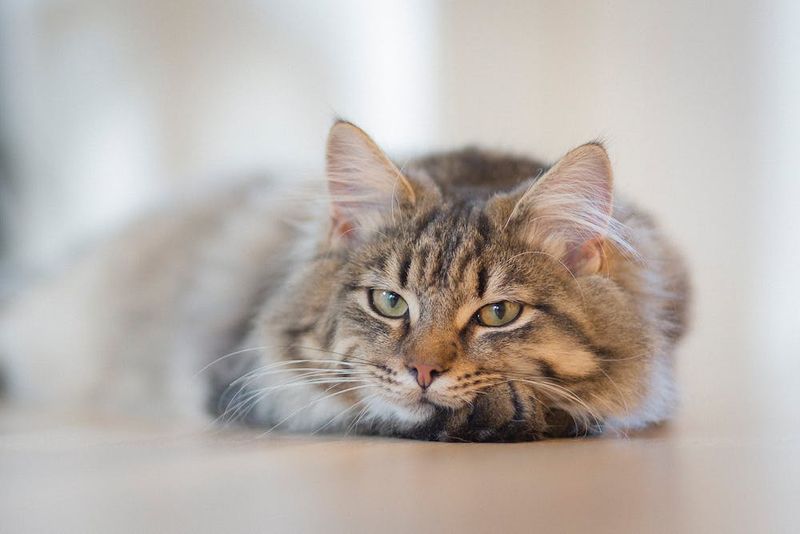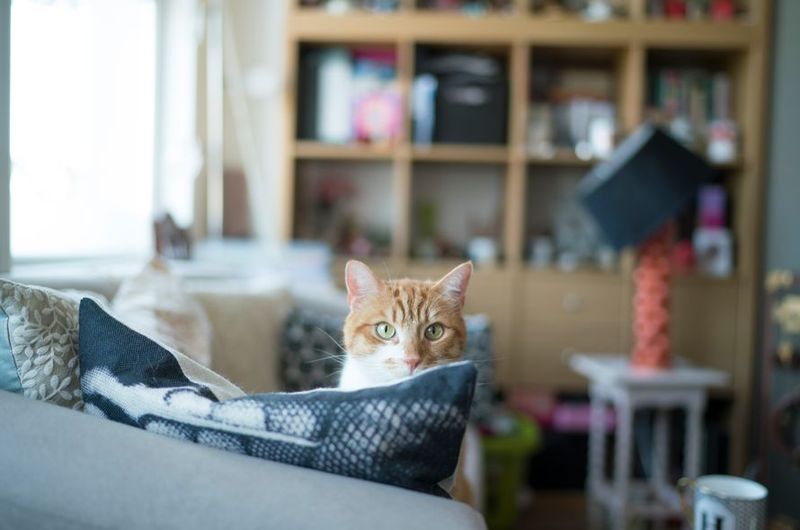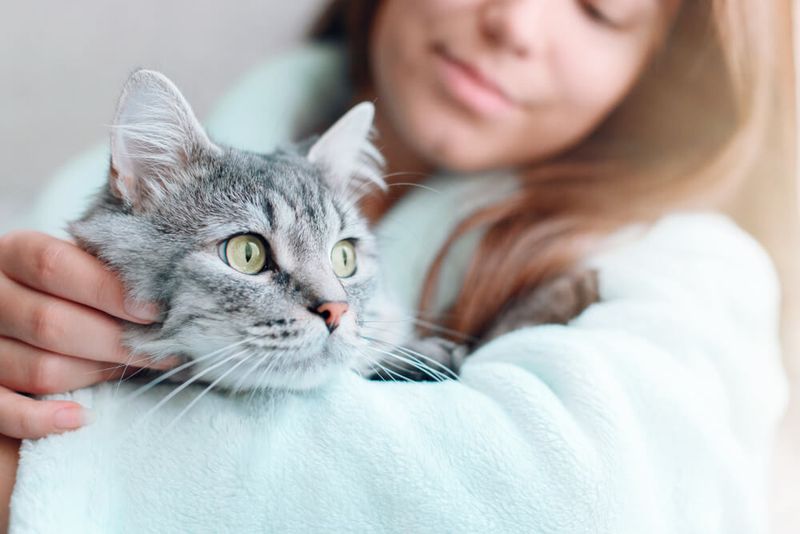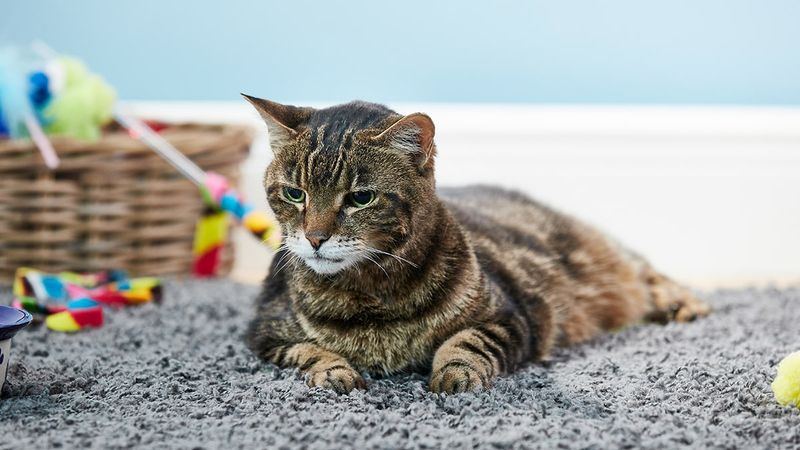📖 Table of Content:
Cats are often seen as mysterious, independent creatures—but behind those quiet stares and graceful exits, there’s a whole world of emotion at play. While some feline aloofness is simply part of their personality, a sudden shift in behavior—especially withdrawal—can be a sign that something deeper is going on. Just like us, cats experience a wide range of emotions, and how they react to those feelings can impact their connection with the people and environments around them.
If your once cuddly cat has started hiding more often, avoiding touch, or seeming unusually distant, it’s worth taking a closer look at what might be behind the behavior. Emotional triggers can subtly or dramatically affect how a cat interacts with its surroundings, and many pet owners overlook the psychological side of feline wellness. Your cat’s retreat may not be about dislike or disinterest—it could be an emotional response to something you haven’t yet noticed.
In this article, we’ll explore nine emotional causes that can make cats pull away from the people they love. From fear and stress to sadness and jealousy, understanding these triggers can help you build a stronger, more empathetic bond with your feline friend. Let’s take a look at what might be going on behind those quiet, watchful eyes.
1. Fear or Anxiety
It often begins with something seemingly small—a loud noise, an unexpected guest, or even a strange scent. In moments of fear, cats instinctively seek safety and solitude. You might notice your cat darting under the bed or hiding in a closet when startled. Sudden changes in environment or routine can heighten their sense of vulnerability. Unlike dogs, cats don’t usually confront what scares them; they retreat and observe from afar. This emotional withdrawal isn’t about rudeness—it’s pure self-preservation. Even well-socialized cats can experience anxiety from overstimulation or unpredictability. By creating a calm, predictable environment, you can help ease their tension and encourage trust.
2. Stress from Change
Moving to a new home, adding a pet, or even rearranging furniture can completely throw a cat off balance. As creatures of habit, they find comfort in consistency and predictability. Whenever their world shifts too quickly, withdrawal can be their way of coping. Stress doesn’t always show up as aggression or vocalization—in many cases, it’s quiet and subtle. You may find your cat sleeping more, eating less, or simply avoiding contact. Their emotional compass relies on routine, so even small changes can feel massive to them. Supporting them through transitions with patience and gentle interaction can make a big difference. Allowing them to adjust at their own pace is often the key to helping them feel safe again.
3. Feeling Overwhelmed
Cats have a limit, and once it’s reached, they need space—fast. A well-meaning cuddle session, too many guests, or rowdy children can easily overwhelm a sensitive feline. Rather than lashing out, many cats quietly remove themselves from the situation. Overstimulation can lead to twitching tails, flattened ears, and eventually total avoidance. They don’t do it out of spite; they’re simply trying to recharge. Creating calm, quiet spaces around your home can give them a sanctuary when things get too intense. Think of it as emotional decompression for your pet. Respecting these moments of retreat helps reinforce their trust in you.
4. Lack of Trust
Earning a cat’s trust takes time, and losing it can happen in an instant. Whether it’s due to a forced bath, a vet visit, or a scolding, negative experiences can leave a mark. A cat who once slept on your chest may suddenly sleep out of sight. Their withdrawal is often their way of saying, “I don’t feel safe right now.” Regaining that trust involves patience, gentle gestures, and consistency. Avoid pushing physical affection when they’re not ready for it. Instead, let them come to you when they’re comfortable. Over time, they’ll relearn that your presence equals safety.
5. Jealousy or Insecurity
Introducing a new pet or baby into the home can shake up a cat’s sense of importance. You may notice your cat acting more withdrawn, avoiding their usual spots, or giving you the cold shoulder. Unlike dogs, cats don’t always compete for attention—they may simply opt out altogether. Jealousy often stems from insecurity, and when your cat feels displaced, they may emotionally retreat. Their routines and spaces may feel invaded, and that loss of control can lead to withdrawal. To help, make sure your cat still receives one-on-one time and undisturbed rest areas. Providing vertical spaces or designated hideouts can restore a sense of territory. A little reassurance goes a long way in making them feel valued again.
6. Sadness or Depression
Grief in cats is real and often misunderstood. After the loss of a companion—human or animal—your cat may become quiet, less interactive, and even stop grooming. These signs can resemble illness, but sometimes they’re emotional in origin. Loneliness can be deeply affecting for social or bonded cats. They might stare at doorways, linger in places associated with their lost companion, or meow more often. It’s heartbreaking to witness, but acknowledging their emotions is the first step in supporting them. You can help by maintaining routines and gently engaging them with affection or play. Over time, their spark often returns—but it’s important to let them mourn at their own pace.
7. Illness or Pain
Often, the first sign that something is physically wrong with your cat is a sudden change in behavior. Cats are experts at masking pain, so they may simply start avoiding interaction or hiding away. Withdrawal becomes their way of minimizing discomfort or stress. A cat in pain may not purr, play, or even enjoy being touched. This emotional shutdown isn’t personal—it’s a protective mechanism. If your cat is suddenly aloof without an obvious reason, a trip to the vet is a wise move. Early detection can prevent more serious health issues. Always consider health as a possible cause behind emotional distance.
8. Lack of Stimulation or Boredom
Despite their sleepy reputations, cats are natural hunters and thinkers—they need mental stimulation. When days are too quiet or predictable, a cat may become withdrawn, lethargic, or disinterested in affection. A lack of toys, playtime, or engagement can slowly dull their spirits. Rather than acting out, some cats simply “shut down” emotionally. You might notice them sleeping excessively or showing no interest in their surroundings. Introducing interactive toys, puzzle feeders, and regular play sessions can revive their curiosity. Rotate activities and enrich their environment to keep things exciting. A stimulated cat is more likely to be social, alert, and emotionally connected.
9. Lack of Socialization
Cats with a history of neglect or abuse may carry emotional wounds that take time to heal. These felines often approach relationships cautiously and may pull away without warning. Their survival instincts are heightened, making them hyper-aware of tone, body language, and movement. Even minor stressors can trigger memories of past harm. Trust-building is a long, delicate process with trauma-impacted cats. Offer them consistent kindness, quiet routines, and choice in how they interact. Avoid sudden movements or loud voices, which can reinforce fear. With time, patience, and respect, many learn to love and feel safe again.









